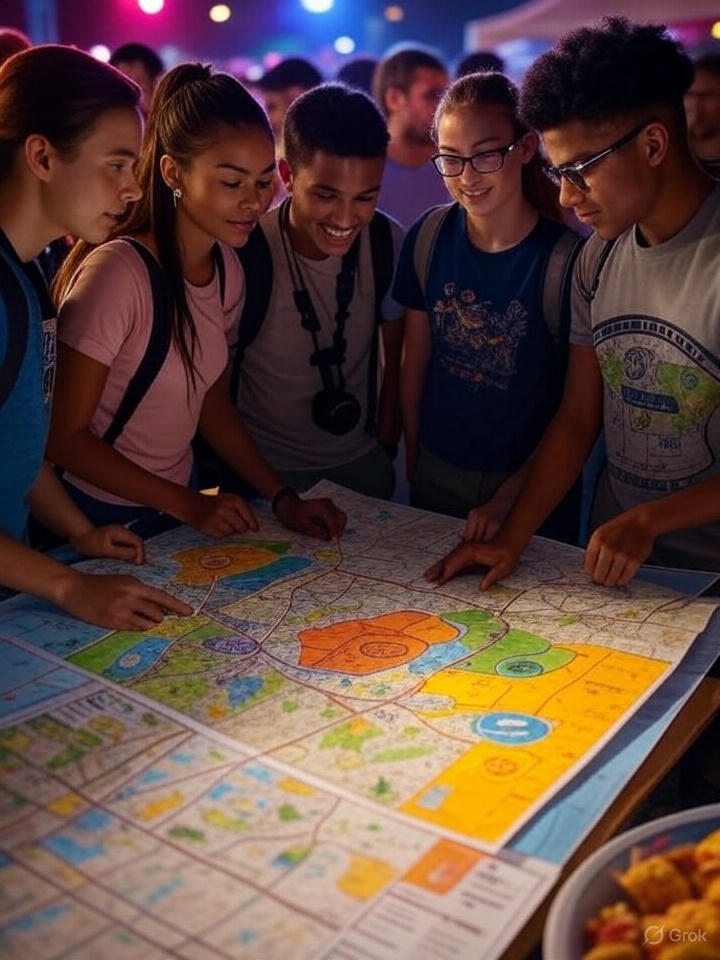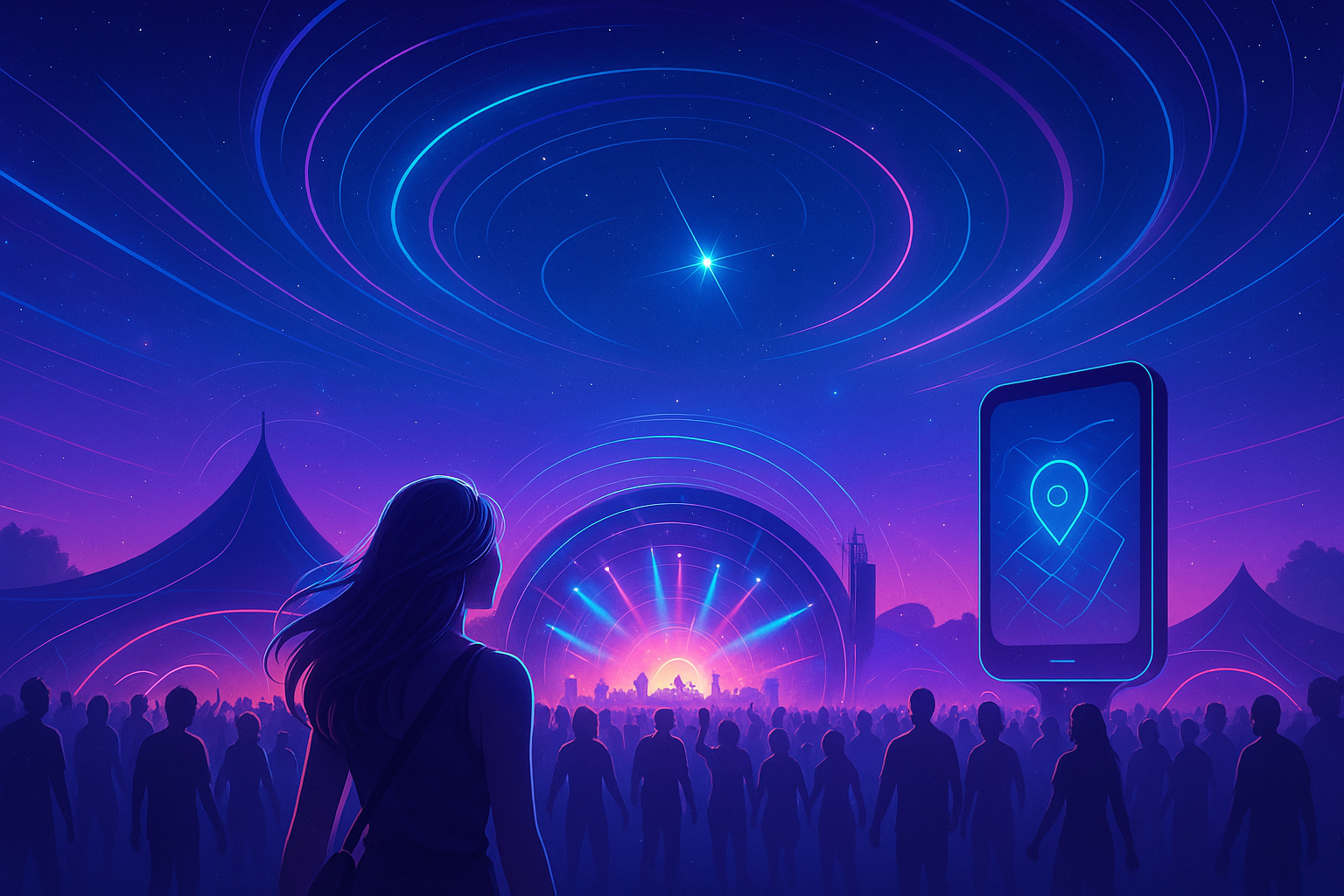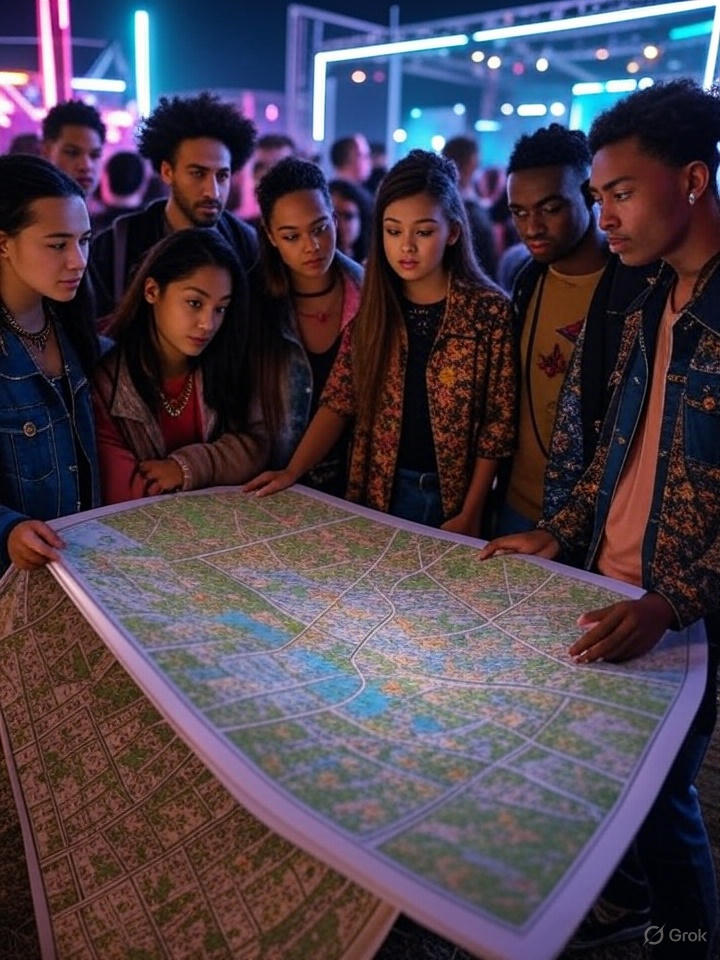In the world of event navigation, a revolution is underway. No longer are attendees reliant solely on official maps that often miss crucial details. Instead, communities are coming together to create rich, detailed maps that reflect real experiences and insider knowledge. This shift to user-generated content is transforming how we navigate and experience events together.
The Limitations of Official Maps
Traditional event maps serve their purpose, but they often fall short in several key areas. They're typically created well in advance of events, meaning last-minute changes aren't reflected. They prioritize sponsor locations and official areas while overlooking the details that matter most to attendees. And they offer a one-size-fits-all approach that doesn't account for different attendee needs or interests.
Most importantly, official maps lack the experiential knowledge that comes from actually navigating the event. They can tell you where the north entrance is located, but not that it typically has shorter lines in the morning, or that there's a shaded path leading to it that's perfect for hot days.
"The wisdom of crowds often surpasses the knowledge of any single entity, even when that entity is the event organizer itself."
The Rise of Community Cartography
This is where community-created maps shine. When event attendees collaborate to build and enhance maps, something remarkable happens: the maps become living documents that reflect real experiences, insider tips, and collective knowledge.
FindTribe has embraced this collaborative approach, enabling communities to create, share, and continuously improve maps for events of all sizes. From massive music festivals to local marathons, users are building detailed maps that go far beyond what official sources provide.
Hidden Amenities
Community mappers often highlight lesser-known restrooms, water stations, and shade spots that don't appear on official maps.
Food & Drink Recommendations
Beyond just marking vendor locations, community maps often include ratings, specialties, and typical wait times.
Comfort Zones
From quiet areas to the best spots for watching performances, these details come from real experiences rather than official designations.
Success Stories: Community Maps in Action
The impact of community-created maps is already being felt across various events. Here are just a few examples of how collaborative mapping has transformed experiences:
The Unofficial Ultra Guide
When a group of festival veterans created a detailed map for Ultra Miami, they included not just the basics but also the best spots to park and meet up before the event, the fastest routes between stages, and even the locations of the cleanest restrooms. Their map was shared hundreds of times and was a pleasure to use for those who were able to access it.
Marathon Support Network
For a major city marathon, local residents created a map highlighting unofficial water stations, the best spectator spots, and areas where runners might need extra encouragement. This community effort enhanced the experience for both participants and supporters.
Formula 1 Fan Zones
Racing enthusiasts collaborated on detailed circuit maps that went beyond the track layout to include the best viewing spots for specific turns, areas with shade during hot days, and even sound "sweet spots" where engine notes are most impressive.
"The most valuable information often comes from those who have experienced the event before you. Community maps capture this collective wisdom and make it accessible to everyone."
How FindTribe Enables Community Cartography
At FindTribe, we've built our platform around the power of community contributions. Here's how we're making it easy for anyone to create, enhance, and share event maps:
Intuitive Mapping Tools
Our user-friendly interface allows anyone to add points of interest, paths, and detailed information without technical expertise.
Verification System
Community members can verify or update information, ensuring maps stay accurate and reliable.
Seamless Sharing
Maps can be easily shared with friends or the broader community, spreading valuable knowledge.
The result is a platform where the collective knowledge of thousands of attendees creates resources far more valuable than any single organization could produce alone.
Becoming a Community Cartographer
Ready to contribute to this mapping revolution? Here's how you can get started:
1. Start with what you know: Even if you're familiar with just one area of an event, that knowledge is valuable. Add details about your favorite viewing spot, that hidden food vendor with short lines, or the quickest route between stages.
2. Collaborate with friends: Invite your event group to contribute to a shared map. Each person can add their discoveries, creating a comprehensive guide that benefits everyone.
3. Update in real-time: During the event, update information as conditions change. Notice a restroom is out of order or a food vendor has run out of their specialty? Update the map to help others.
4. Share your expertise: After the event, take a few minutes to add details you discovered that might help future attendees. Your experience becomes part of a valuable resource for the community.
The Future of Community Mapping
As technology advances and more users contribute, community-created maps will only become more valuable. We envision a future where every event, from major festivals to local gatherings, has rich, detailed maps created by those who know them best—the attendees themselves.
This collaborative approach doesn't just improve navigation; it strengthens communities by creating shared resources that benefit everyone. It transforms the way we experience events, making them more accessible, enjoyable, and connected.
Ready to join the community mapping movement? Download FindTribe and start contributing to or benefiting from community-created maps today.




Leave a Comment
Share your thoughts, experiences, or questions about this article.
Thank you for your comment! It will appear after moderation.
Oops! Something went wrong. Please try again.